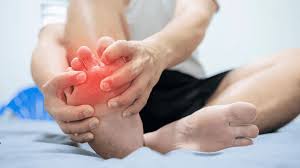For anyone dealing with gout, waking up pain-free can feel like winning a lottery. But what happens if standard treatments leave you limping through life, wishing you could reset your feet altogether? That might be your cue to explore something newer, smarter, and surprisingly effective—foot regeneration.
Recurrent Flare-ups Unresponsive to Standard Gout Treatments
Having flare-ups again and again feels exhausting. Medications that once worked wonders sometimes fade in effectiveness, leaving people frustrated. Even after switching between different anti-inflammatory treatments, relief remains elusive. At this point, searching for a gout specialist near me to discuss foot regeneration might offer a fresh start.
Foot regeneration addresses underlying issues by stimulating the body to heal naturally. Instead of only soothing symptoms, it targets root causes—something traditional medications often can’t fully achieve. Anyone tired of temporary fixes and repetitive doctor visits might discover regenerative treatments provide long-term relief they didn’t think possible.
Chronic Joint Degradation Causing Limited Foot Mobility
Over time, joint damage piles up like a slow-motion car wreck. Many people suddenly find everyday movements, such as walking or standing, painfully challenging. Climbing stairs becomes a marathon, and enjoying hobbies or activities they once loved seems impossible. When chronic damage starts dictating daily life, consulting a gout doctor near me about foot regeneration is a smart next step.
Regenerative therapies, like platelet-rich plasma (PRP) or stem cell injections, help reverse joint deterioration. They work by encouraging healthy tissue growth and reducing painful inflammation. Patients often see noticeable improvements in flexibility and strength, regaining the mobility needed to reclaim their independence. It’s an option for those tired of merely coping and ready to start healing.
Persistent Inflammation Despite Medication Adjustments
Medications should reduce inflammation—but sometimes they simply don’t. Adjustments in dosages or drug combinations leave patients cycling through pills without meaningful improvement. Persistent swelling remains, creating constant discomfort. In these scenarios, exploring foot regeneration treatments becomes a logical step toward genuine recovery.
Regenerative methods aim directly at inflammation’s source, calming irritated tissues and initiating natural repair processes. These therapies go beyond surface-level symptom relief. Patients often report reduced swelling and significantly less pain, finally experiencing the peace traditional medicines failed to deliver. For many, it’s the relief they’ve long hoped for, provided through modern medical innovation.
Noticeable Decline in Daily Function Due to Joint Damage
Day-to-day activities turn frustrating as joint damage mounts. Tasks like grocery shopping, yard work, or playing with kids become chores filled with hesitation and discomfort. Life becomes centered around pain management rather than enjoyment, signaling a time to consider advanced treatments such as foot regeneration.
By opting for regenerative approaches, patients stimulate the body’s ability to restore joint function naturally. Treatments encourage new cell growth, enhance tissue repair, and dramatically ease joint-related struggles. Soon, daily tasks return to their rightful place—routine, simple, and enjoyable once more, freeing people from the persistent shadow of chronic joint pain.
Elevated Dependency on Pain Relievers Without Relief
Relying heavily on painkillers that no longer work signals a clear problem. Increasing medication dosages without adequate relief often leads to frustration and health risks from prolonged drug use. If someone finds themselves constantly reaching for ineffective medications, foot regeneration could offer the breakthrough they need.
Regenerative treatments provide an alternative pathway, tackling pain at its biological roots. Techniques such as stem cell therapy can alleviate discomfort naturally and effectively, often reducing or eliminating the need for daily painkillers. For those eager to regain control without relying on pills, exploring regenerative care can open doors to a healthier, less medicated future.
Foot Joint Stiffness Impacting Routine Activities
Joint stiffness turns mornings into battles. Simple acts like putting on shoes, driving, or walking pets become laborious. This stiffness isn’t just uncomfortable—it restricts daily life significantly. If stiffness limits regular activities, regenerative treatments might offer a powerful solution.
Foot regeneration techniques address stiffness directly by regenerating damaged tissues and restoring fluid movement in joints. Patients frequently report dramatic improvement in flexibility after these treatments. Regenerative approaches restore comfort and ease to everyday activities, turning morning stiffness into manageable moments, not daily ordeals.
Progressive Tissue Damage Indicated by Imaging Results
Imaging results that highlight worsening tissue damage sound alarms for many patients. X-rays or MRIs revealing progressive degeneration confirm why pain levels keep climbing despite traditional treatments. Facing undeniable evidence of tissue deterioration, people often seek innovative solutions, such as regenerative therapies, to stop further decline.
Foot regeneration works by jump-starting the body’s repair mechanisms, reversing ongoing tissue damage instead of just masking pain. By utilizing the body’s innate healing capabilities, regenerative techniques address structural deterioration head-on. Patients often experience improved imaging results over time, showcasing genuine tissue restoration—proof positive that regenerative medicine provides real, measurable results beyond mere pain relief.

